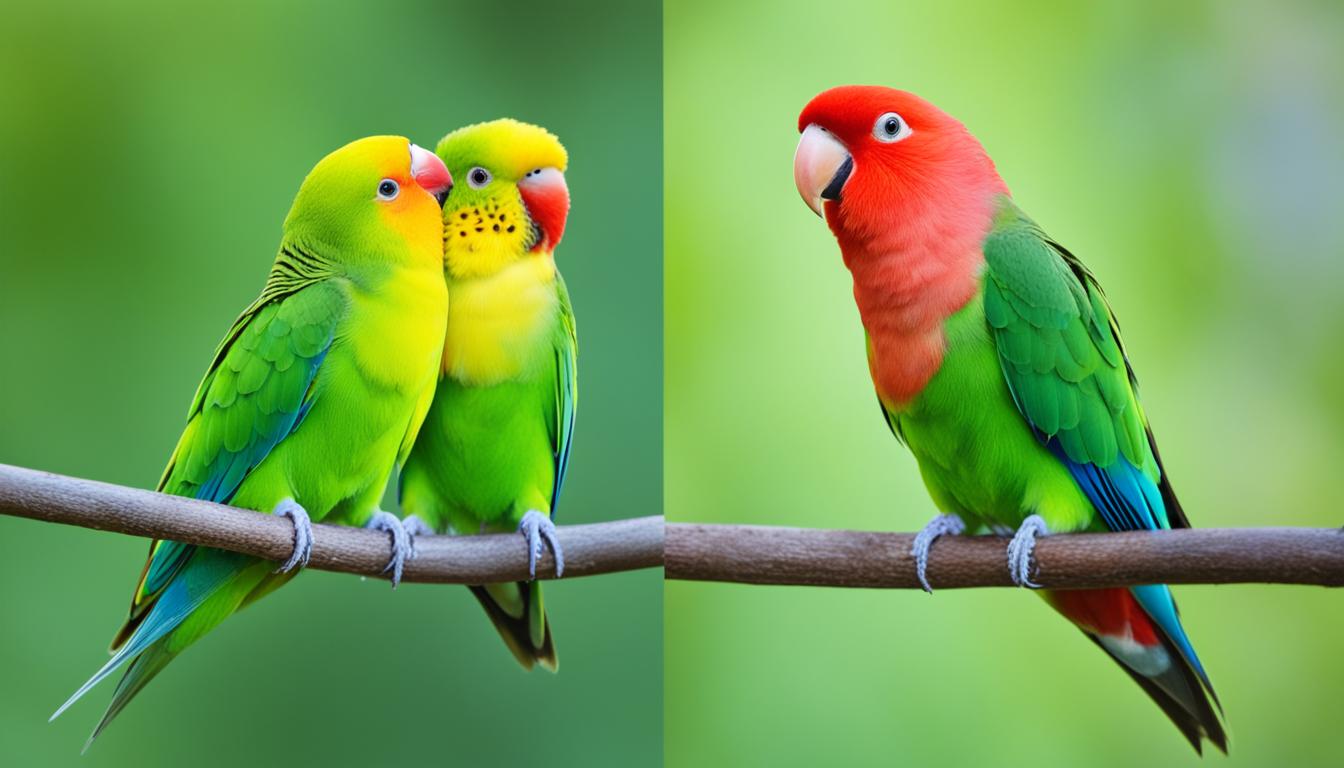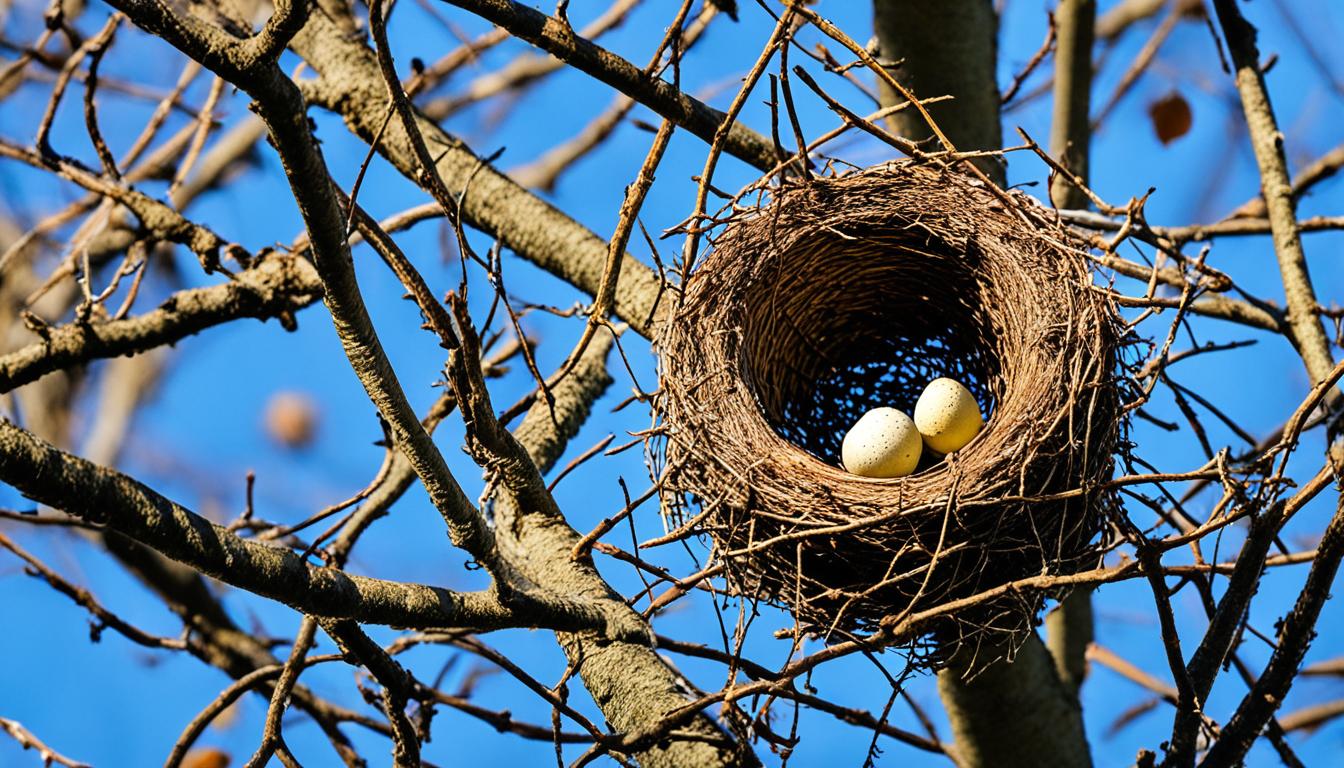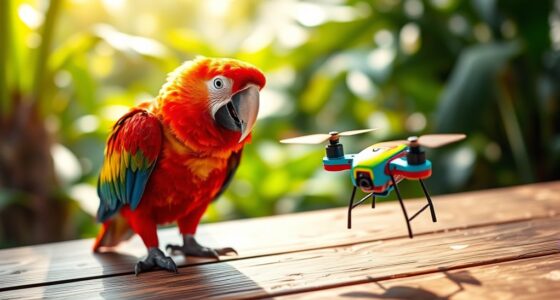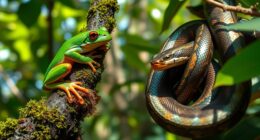Did you realize that birds are one of the most popular choices of pets in the United States? Lovebirds and parakeets are among the favored avian companions for bird lovers who want to bring a feathered friend into their home. If you’re thinking about getting a bird as a pet, it’s crucial to learn about the traits and care needs of these two species to decide which one suits your lifestyle and preferences best.
Key Takeaways:
- Lovebirds and parakeets are among the most popular pet bird species in the United States.
- Lovebirds have vibrant colors and form strong bonds, while parakeets are colorful, playful, and highly trainable.
- Lovebirds require regular socialization and a secure cage, while parakeets require ample mental and physical stimulation.
- Lovebirds and parakeets have different dietary needs but benefit from a balanced diet.
- Consider your lifestyle, preferences, and ability to provide care and socialization when choosing between lovebirds and parakeets as pets.
Lovebirds: Small Birds with Big Personalities
Lovebirds are adorable and fascinating birds that captivate bird enthusiasts with their stunning colors and adorable antics. Despite being small in size, lovebirds have personalities that shine brightly and make them a joy to have as pets. Their affectionate and playful nature endears them to their owners, earning them the reputation of being small birds with big personalities.
Lovebirds live up to their name. These charming birds form strong pair bonds with their chosen mate and develop a deep connection with their human companions. They thrive on interaction, affection, and attention, eagerly seeking out the companionship of their owner. Whether cuddling up for a snuggle or engaging in playful activities, lovebirds bring endless joy and entertainment to their owners’ lives.
One remarkable aspect of lovebirds is their longevity. With proper care and a nurturing environment, lovebirds can live for over 20 years. This means that they can be lifelong companions, filling your home with their vibrant colors, adorable chirps, and vibrant personalities for years to come.
In addition to their small size and big personalities, lovebirds are also known for their striking plumage. These beautiful birds come in a variety of colors, from vibrant yellows and oranges to soft greens and blues. Their feathers create a visual spectacle that is truly awe-inspiring, making them a delightful addition to any home.
Create a Harmonious Bond with Your Lovebird
Building a strong bond with your lovebird requires time, patience, and consistent effort. It is essential to spend quality time with your bird, engaging in activities that stimulate their natural instincts and promote a sense of companionship. By providing ample opportunities for interaction, such as gentle petting, talking to your lovebird, or playing with toys together, you can establish a deep and meaningful relationship.
Lovebirds are social creatures and, with regular socialization and interaction, they thrive in the companionship of their human flock. Their affectionate and playful nature make them the perfect pet for those who seek a loving and interactive bird companion.
Whether you choose to keep a pair of lovebirds or have a single bird that forms a bond with you, these small wonders will leave an indelible mark on your heart. Their endearing personalities and captivating charm make them cherished companions for bird lovers of all ages.
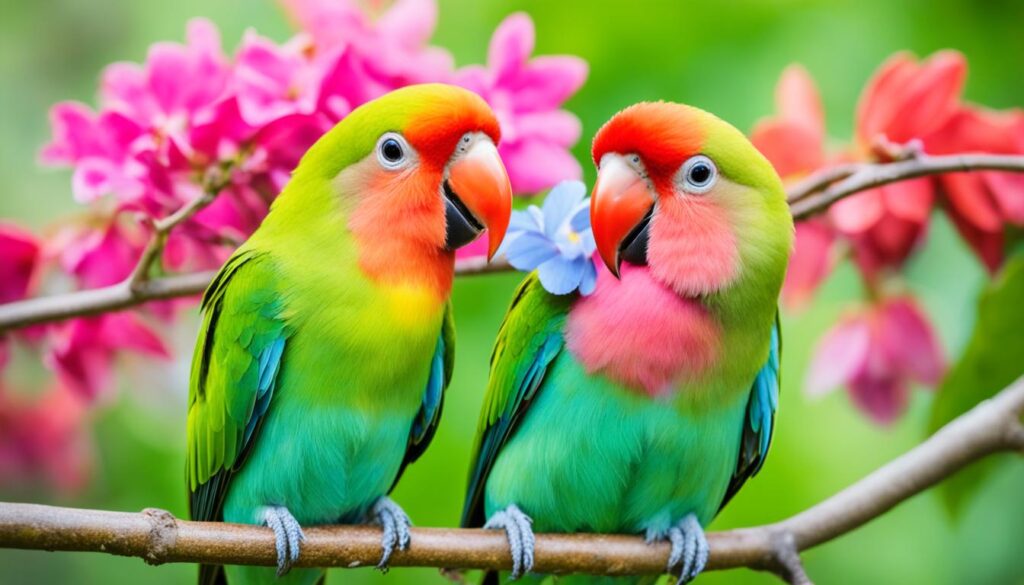
Parakeets: Playful and Low-Maintenance Birds
Parakeets, also known as budgerigars, are one of the most popular pet birds worldwide. They are small, colorful, and highly trainable. Parakeets are known for their playful and active nature, enjoying interactive playtime with their owners.
Unlike other high-maintenance pets, parakeets are relatively low-maintenance birds, making them an excellent choice for those with busy lifestyles. They are independent creatures and can entertain themselves with toys and activities, requiring less constant attention compared to some other pets.
If you’re looking for a sociable and interactive companion, parakeets are the perfect choice. They can quickly bond with their owners and enjoy spending time outside of their cage. Parakeets are sociable birds, and they thrive in pairs or with human companionship.
“Parakeets are playful and curious creatures. They love to explore their environment and engage in various activities with their owners. Their playful nature adds joy and entertainment to our lives.”
One of the remarkable abilities of parakeets is their capability to mimic human speech and learn tricks and commands. With patience and consistent training, you can teach your parakeet to perform tricks, such as flying through hoops or speaking simple phrases.
To ensure the well-being of your parakeet, it’s essential to provide a spacious cage that allows them to move freely and engage in physical activities. A cage with horizontal space is preferable, as parakeets love to fly horizontally. Fill their cage with toys, perches, and swings to keep them mentally stimulated.
Proper care and attention are crucial for the happiness and longevity of your parakeet. With a balanced diet of seeds, pellets, fresh fruits, and vegetables, along with clean water, your parakeet will thrive and live a happy life. Regular veterinary check-ups and a clean living environment are also necessary for their well-being.
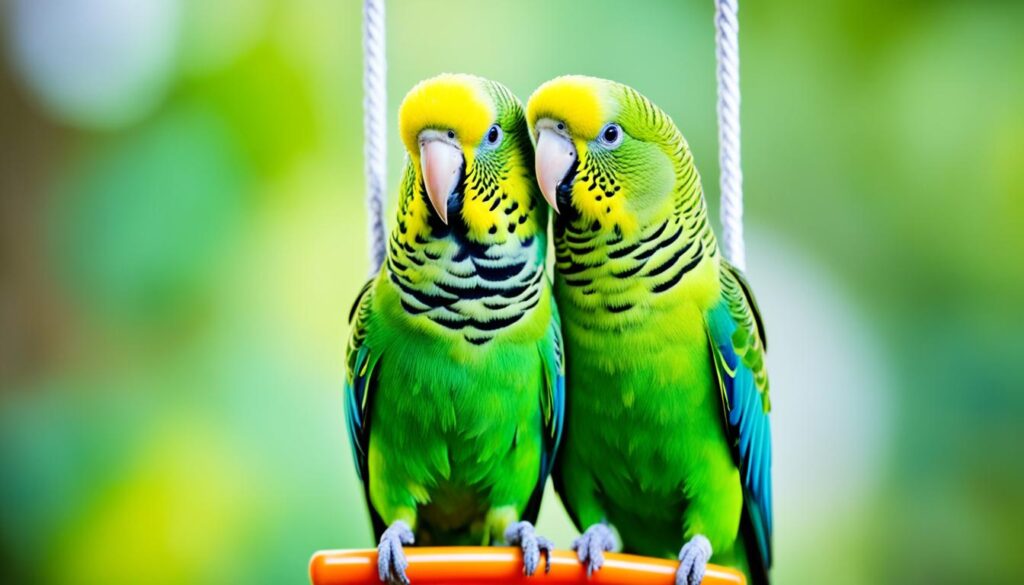
Benefits of Choosing Parakeets as Pets:
- Playful and interactive companions
- Low-maintenance and independent
- Trainable and capable of mimicking human speech
- Enjoy interactive playtime with their owners
- Long lifespan of 7-15 years with proper care
Considerations for Care and Socialization
Both lovebirds and parakeets require proper care and socialization to thrive. While each species has its own unique needs, providing a nurturing environment is essential for the well-being of your feathered friend. Let’s explore some key considerations when it comes to bird care and socialization.
Lovebirds: Challenging but Rewarding
Lovebirds are known for their vibrant colors, playful antics, and strong bonds with their owners. However, they can be more challenging to tame compared to parakeets. Occasionally, lovebirds may exhibit aggression or dominance behaviors, especially during breeding season or when they feel threatened. Regular socialization is crucial to help them feel secure and prevent behavioral issues.
It is advisable to keep lovebirds in pairs or as a single bird that forms a close bond with its human companions. This mimics their natural social structure and provides them with the companionship and stimulation they need. Lovebirds thrive when they have regular interaction, engaging toys, and a secure cage to prevent escape.
Parakeets: Playful and Stimulated
Parakeets, on the other hand, are generally easier to tame and train compared to lovebirds. These playful and active birds enjoy interactive playtime with their owners and can easily be taught tricks and commands. However, parakeets can be noisy, especially when they are seeking attention or are bored.
To ensure the overall well-being of your parakeet, it is important to provide appropriate mental and physical stimulation. This can include interactive toys, diverse perches, and regular out-of-cage time for supervised flying. Parakeets also benefit from social interaction with their owners and other birds, but they can also be content as a single pet.
Proper Care for Both Species
- Provide a spacious and secure cage that allows for flying and movement.
- Ensure a balanced diet consisting of high-quality pellets, grains, fresh fruits, and vegetables.
- Keep their cage and feeding areas clean to prevent the spread of diseases.
- Offer mental stimulation through toys, foraging activities, and new experiences.
- Regularly monitor their health and consult a veterinarian specialized in avian care when needed.
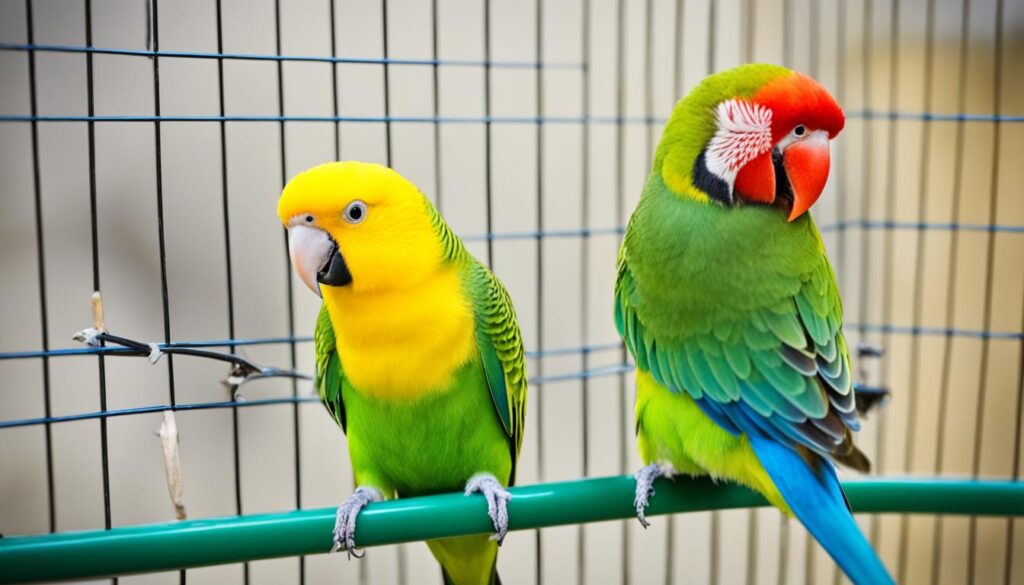
By providing proper care and socialization, both lovebirds and parakeets can live happy and fulfilling lives as your cherished companions. Remember, each bird has its own unique personality and needs, so it’s important to tailor your approach accordingly to ensure their well-being.
| Lovebirds | Parakeets | |
|---|---|---|
| Difficulty of Taming | More challenging | Easier |
| Socialization Needs | Regular and consistent | Regular interaction |
| Recommended Grouping | Pairs or single bird with close human bond | Can be kept as a single pet |
| Behavioral Characteristics | Occasional aggression or dominance | Noisier, seeks attention |
| Lifespan | 20+ years | 7-15 years |
Choosing the Right Cage and Diet
When it comes to providing a comfortable living space for your lovebird or parakeet, the right bird cage is essential. It should be spacious enough to allow your feathered friend to fly and move with ease. A general rule of thumb is to select a cage that is at least twice the size of their wingspan. This will give them the freedom they need to exercise and explore.
Your bird cage should be equipped with perches to support their feet and provide a variety of sitting options. It’s also important to include toys for mental stimulation and promote natural behaviors. Consider adding a bathing bowl to your bird’s cage, as they enjoy splashing around and keeping their feathers clean.
Now, let’s talk about diet. Lovebirds and parakeets have different dietary requirements, but a balanced diet is crucial for both. A healthy diet for lovebirds should consist of high-quality bird pellets, supplemented with grains, fresh fruits, and vegetables. These colorful birds also benefit from occasional treats such as millet sprays.
Parakeets, on the other hand, thrive on a diet of high-quality pellets, supplemented with seeds, fresh fruits, and vegetables. They also enjoy occasional treats like millet or whole grains.
Whatever bird species you choose, it’s important to provide fresh and clean water at all times. Water should be changed daily to prevent bacterial growth and ensure your bird’s hydration.
Remember, the key to maintaining your bird’s overall health and happiness is a clean and hygienic living environment. Regularly clean the cage and remove any droppings or uneaten food to prevent the build-up of bacteria and maintain a healthy atmosphere for your feathered companion.
| Lovebirds | Parakeets | |
|---|---|---|
| Diet | High-quality bird pellets, grains, fresh fruits, and vegetables. | High-quality bird pellets, seeds, fresh fruits, and vegetables. |
| Cage Requirements | At least twice the size of their wingspan, equipped with perches, toys, and a bathing bowl. | At least twice the size of their wingspan, equipped with perches, toys, and a bathing bowl. |
| Water | Fresh and clean water should be available at all times, changed daily. | Fresh and clean water should be available at all times, changed daily. |
| Cleaning | Regular cleaning is essential to maintain hygiene and prevent bacteria. | Regular cleaning is essential to maintain hygiene and prevent bacteria. |
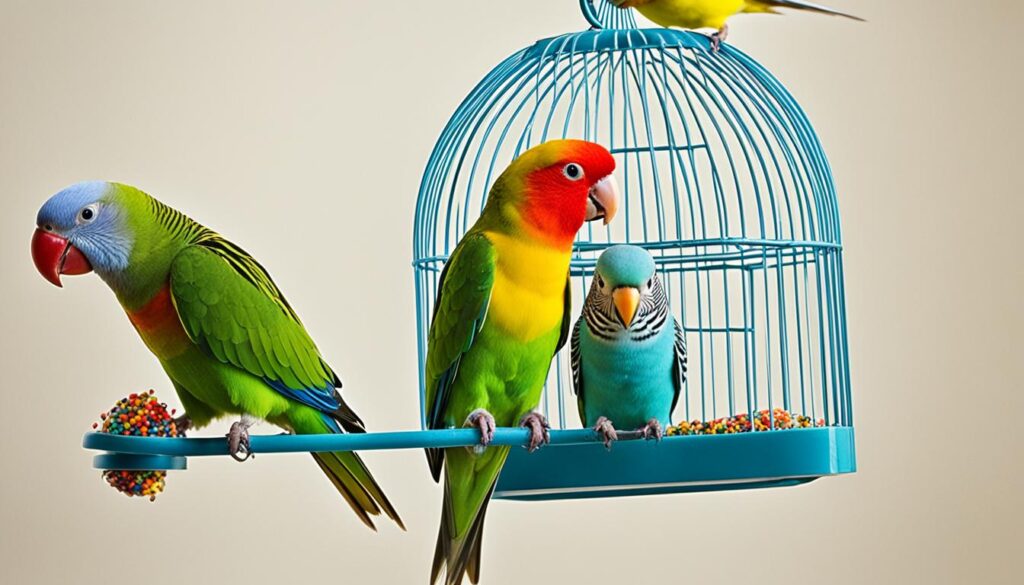
Conclusion
In conclusion, both lovebirds and parakeets can be fantastic additions to your home as beloved pets. However, it’s important to understand the distinct characteristics and care requirements of each bird before making a decision. Lovebirds are known for their strong bonds and affectionate nature, making them ideal for those seeking a close companionship. On the other hand, parakeets are playful and low-maintenance, perfect for individuals or families with a busy lifestyle.
When choosing between lovebirds and parakeets, it’s crucial to consider your lifestyle, preferences, and ability to provide proper care and socialization. Bird ownership requires commitment, time, and responsibility. Before bringing a feathered friend into your household, ensure that you have thoroughly researched and understand the needs of your chosen bird species.
Regardless of whether you choose lovebirds or parakeets, both birds have the potential to bring immense joy, companionship, and beauty to your life. As you embark on your journey as a bird owner, remember to create an enriching environment, provide a balanced diet, and devote quality time to bond with your feathered companion. With love, care, and attention, your lovebird or parakeet will flourish, becoming a cherished member of your family.
